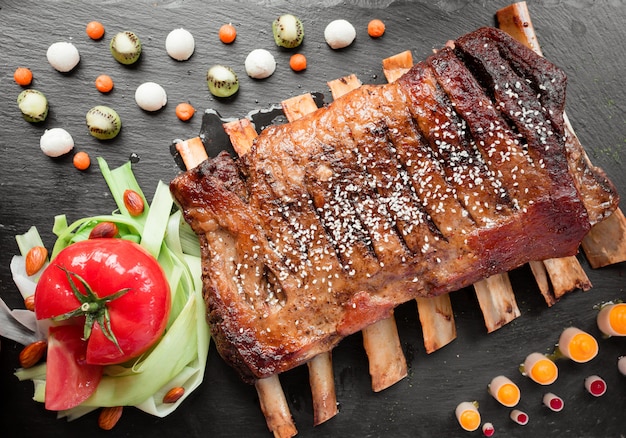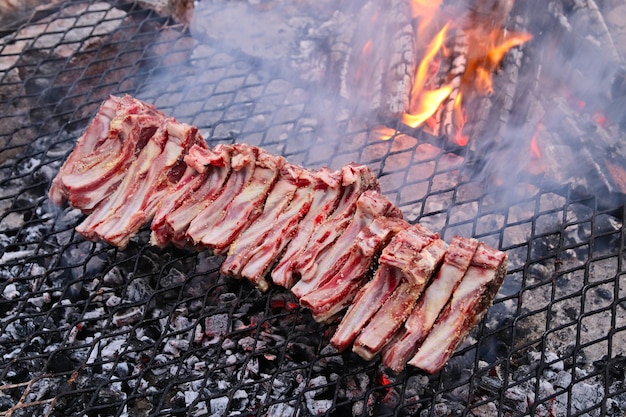Is it OK to eat Silverskin?
Silverskin, also known as silver skin or silver membrane, is a thin layer of connective tissue that surrounds certain cuts of meat, particularly beef. It can be found on cuts such as tenderloin, ribeye, and sirloin. While some people may choose to remove this silvery coating from their meat before cooking or eating, others wonder if it is safe to consume. In this article, we will explore whether it is OK to eat silverskin and discuss its potential impact on taste, texture, and health.
What is Silverskin?
Silverskin is a natural part of the muscle structure in animals. It is composed mainly of collagen, a protein found in connective tissues, and it provides support and structure to muscles. Silverskin is typically white or silver in appearance, hence its name. It is relatively tough and can be slightly chewy when cooked.
Taste and Texture Impact
When it comes to taste and texture, silverskin can have a noticeable effect on the overall eating experience. Some people find the presence of silverskin to be undesirable due to its toughness and chewiness. Removing it can result in a more tender and enjoyable bite.
“Silverskin can affect the tenderness of the meat and make it less enjoyable to eat.”
On the other hand, there are those who argue that leaving the silverskin intact can add flavor and juiciness to the meat. The collagen in silverskin breaks down during cooking, releasing gelatin which can enhance the mouthfeel and moistness of the meat. It ultimately comes down to personal preference and the specific cut of meat being consumed.
Health Considerations
In terms of health, there is no inherent risk in consuming silverskin. It is a natural component of the meat and is not harmful when ingested. However, it is worth noting that silverskin can be difficult to chew and may not be easily digestible for some individuals.
If you have issues with digestion or find the texture of silverskin unappealing, it is recommended to remove it before cooking or eating. Additionally, if your meat has been prepared using marinades or seasoning rubs, removing the silverskin allows these flavors to penetrate the meat more effectively.
Removing Silverskin
To remove silverskin from meat, you can use a sharp knife or ask your butcher to do it for you. Here is a simple step-by-step guide:
- Lay the meat on a cutting board with the silverskin side facing up.
- Using a sharp knife, insert the blade under the silverskin at one end.
- Gently lift the silverskin away from the meat while keeping the knife blade parallel to the cutting board.
- Continue lifting the silverskin and cutting as needed until it is completely removed.
- Discard the silverskin and proceed with cooking or preparing the meat as desired.
It is important to note that not all cuts of meat will have a significant amount of silverskin. Some cuts may have minimal or even no silverskin present, so removal may not be necessary.
Can you eat the silverskin on ribs?
If you’re a barbecue enthusiast or simply enjoy indulging in a plate of succulent ribs, you may have wondered whether it’s safe to eat the silverskin that often covers the bone side of pork ribs. Silverskin, also known as connective tissue, is a thin, white layer that can be tough and chewy when cooked.
Understanding Silverskin
Silverskin is a fibrous membrane that surrounds muscles and helps protect them. While it can add flavor to some cuts of meat when properly rendered, it can become tough and unappetizing when left intact on ribs. The general consensus among culinary experts is that removing the silverskin before cooking allows for a more enjoyable eating experience.
It’s important to note that silverskin is not the same as the silver skin found on beef tenderloin, which is a different membrane that can be eaten when cooked correctly.
Why Remove Silverskin?
There are several reasons why it is recommended to remove the silverskin from pork ribs:
- Tough Texture: The silverskin can be tough and chewy, which can make it less enjoyable to eat.
- Improved Flavor: Removing the silverskin allows the seasonings and marinades to better penetrate the meat, enhancing the overall flavor.
- Even Cooking: When the silverskin is left on, it can prevent the meat from properly absorbing smoke, heat, and flavors during the cooking process.
How to Remove Silverskin
To remove the silverskin from ribs, follow these steps:
- Start by using a knife or a blunt object, such as a butter knife, to loosen a corner of the silverskin.
- Once you have a grip on the silverskin, grip it firmly with a paper towel or clean cloth and pull it off in one smooth motion.
- If the silverskin is stubborn, you can use a pair of kitchen pliers to get a better grip for removal.
- Repeat the process until all the silverskin is removed from the ribs.
Remember to take caution when handling knives and other sharp objects in the kitchen to avoid any injuries.
With the silverskin removed, you can now season your ribs with your favorite rubs or marinades, allowing them to shine during the cooking process. Whether you’re grilling, smoking, or baking your ribs, removing the silverskin will help ensure a more tender and flavorful end result.


